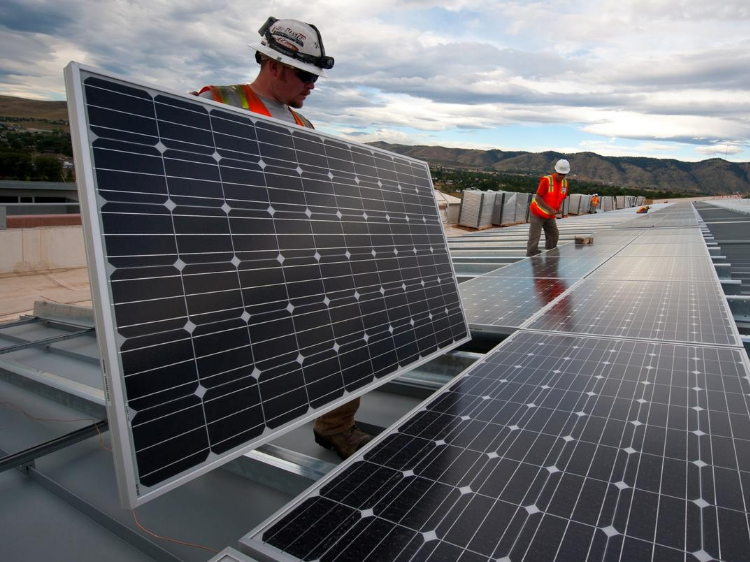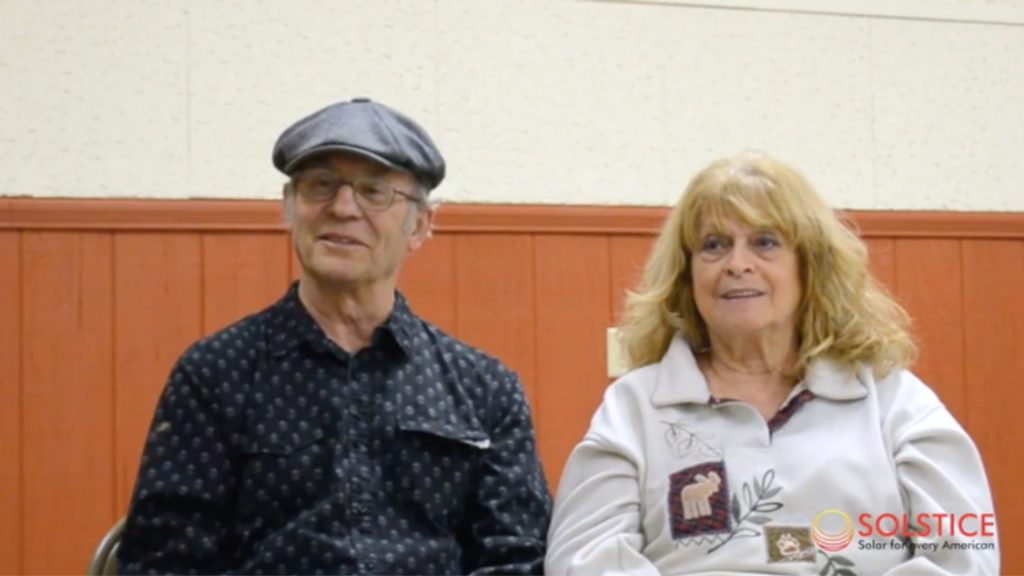We have all been impacted by COVID-19 in one way or another—and the community solar industry is no exception. However, the post-pandemic future of community solar is looking especially bright.
We’re all facing uncertainty right now—over our health, our finances, and our very ability to live and work as usual.
It’s no surprise that the COVID-19 pandemic has hindered the entire energy industry, amongst other industries, in 2020. Businesses don’t need as much energy, and households can’t afford to pay as much for it (and shouldn’t have to). Frankly, they have a lot more pressing things to worry about.
So, solar energy hasn’t been immune to the challenges of the pandemic. But community solar is proving to be tough, even showing its potential to provide more value to communities now than ever before. As a result, community solar will probably show reduced growth in 2020—but the stage is set to take off after that.
Table of Contents
COVID-19 and the Energy Sector
The COVID-19-induced economic slowdown has hurt the energy sector in many ways, namely by decreasing investment in energy, lowering overall demand for energy, and, as a result of those things, reducing the price of energy. All of these financial adversities have harmed energy producers’ revenue.
Of course, various segments of the energy industry have faced different challenges and advantages during this crisis. Fossil fuel producers have benefitted from at least $3 billion dollars in federal financial relief as well as other accommodations like regulatory rollbacks and reductions to the royalties they owe for drilling on public land. This federal support, along with preexisting fossil fuel subsidies, has helped oil and gas producers stay viable during otherwise difficult circumstances.
Renewables have received comparatively little support, with the only significant federal support coming from the IRS in the form of tax relief for renewable energy developers. However, efforts to get renewables included in forthcoming relief packages are still ongoing, and major players like McDonald’s and Pepsi are now involved.

COVID-19 and the Solar Industry
COVID-19’s effects have rippled across the solar industry. Social distancing measures have made in-person connections obsolete for the time being, ruling out regular in-person events and consultations that drive much of the education consumers often need to feel comfortable switching to solar. This is particularly concerning for the solar industry’s efforts to include low-income customers and other traditionally under-resourced communities, for whom minimal access to the internet or limited computer literacy can make it hard to translate in-person outreach efforts online.
Difficulty reaching customers is one explanation for reduced solar energy installations, but it isn’t the only cause. Particularly in the residential solar market, financial stress has presented a barrier to entry for many consumers. Rooftop solar installation requires both an upfront payment, which can be rather expensive (usually upwards of $10-15,000), and long-term commitment in order to earn a return on investment. Both the upfront expense and financial commitment associated with rooftop solar create more risk for consumers, which doesn’t pair well with the more risk-averse economic environment that comes with a global pandemic.
Solar market growth has been slower than expected due to lower-than-projected investment. Analysis from BloombergNEF shows that investments in new solar developments were 12% lower in the first half of 2020 than they were in 2019. Logistical challenges related to the pandemic, including prolonged shutdowns and work stoppages in certain states, have also impacted solar developers’ ability to install new arrays. Data on new solar permits is one way to see this impact. The Ohm Analytics Weekly Solar Activity Tracker shows that, while permitting has varied from state to state, key states like California and New York have seen significant decreases or even shutdowns for new solar permits. Fortunately, the data also shows that permitting has recently increased in many states as they start to open back up, trending towards pre-COVID-19 levels.
The convergence of all these factors has resulted in fewer new solar energy projects than previously expected. More specifically, the Solar Energy Industries Association (SEIA) now estimates that there will be about 1725 MW of solar installed in 2020, or about 288,000 homes’ worth of power–a 9% reduction from its prediction.
Solar Workforce Impacts
It goes without saying that reduced activity in the solar market impacts the solar workforce, too. As one of the fastest-growing jobs in America over the last decade and the fastest in the last several years, solar energy installations have given a massive boost to the U.S. economy. Solar was predicted to generate rapid job growth once again this year, but COVID-19 has tempered those expectations. SEIA originally projected the solar industry at large to employ 302,000 people by the end of 2020. COVID-19 job loss pushed the industry in the opposite direction, and at the end of June solar employed 188,000 people.
Although the solar workforce at large has been hurt by the pandemic, community solar has been a bright spot, showing substantially more resilience than other areas of the market. There are a few key reasons for this, centering around the product offered.

The Community Solar Industry’s Response
What makes community solar resilient in the face of the pandemic?
Financial flexibility
The offer of community solar becomes more attractive during times of hardship. Community solar requires no upfront payment and, as contracts in the industry have gotten more and more flexible, no long-term commitment, either. Moreover, the guaranteed electric bill savings that result from signing up for low-commitment community solar programs are attracting more people to sign up for reliable savings, even beyond environmental impact.
Solar farm siting
Another reason for community solar’s elevated resilience in this crisis is that solar farm installation is largely feasible under social distancing requirements. Solar farms are built in a centralized location away from homes or crowded areas. Customers don’t need to install anything on their homes or have anyone evaluate their property. While residential installation is still continuing with proper precautions, it requires some more work to ensure safe travel to individual homes and commercial businesses.
An easy sign-up process
Without the need for site evaluations or installations, community solar lends itself well to a primarily digital and phone-oriented sign-up process. Customers can learn about community solar online, enroll their own homes, and manage their billing digitally in just a few minutes from the comfort of their own homes.
An outlet to support local communities
Community solar helps create local jobs and increase tax revenue for the municipalities hosting the solar farm. Additionally, it can help ease the financial burdens of entire communities through lower electric bills – in addition to ensuring a cleaner environment for residents. Many local organizations see community solar as a fundraising opportunity, as well as a way to invest in a local project for their town.
To be sure, while community solar has been resilient, it has not been immune to the effects of the pandemic. In some cases, solar farm construction has fallen behind schedule as sites were temporarily closed. By now, however, construction is largely on track across the country, as developers have found safe ways to get back to work.
As noted earlier, job loss has occurred across the solar industry, including in community solar. Solar farms are built for communities, with tours of the farms and customer gatherings to build the kind of sustainable network our customers want to be a part of. The pandemic has forced Solstice and other community solar organizations to rethink their community outreach and replicate the camaraderie of traditional gatherings online.
It’s a challenge, but the solar industry is up for it.

Rebuilding Toward a Clean Energy Transition
The massive disruptions of COVID-19 call for huge relief efforts throughout the pandemic and recovery efforts on the other side. The need for recovery puts us at a unique crossroads: rebuild the systems we currently rely on or use this opportunity to invest in new, more resilient infrastructure for the future.
In energy terms, this means either continuing to depend on fossil fuels–and accepting the multitude of harms that come with that decision—or choosing to invest in expanding renewable energy.
Renewable energy, including community solar, offers a stable, sustainable option for the future of our energy. The recent cancellation of the Atlantic Coast Pipeline and successful legal challenge against the Dakota Access Pipeline illustrate the volatility of fossil fuels, as well as the power we as citizens and governments can have in the fight for a cleaner energy system. We have a window right now to accelerate our energy transition, create more good-paying American jobs, and spur investment in technology that will grant us a better quality of life.
In particular, community solar comes with the same benefits of other renewables, including cutting our carbon footprint and improving our air quality, but with a few key advantages–one being that it is capable of being more accessible to diverse populations. Technical and financial innovations will allow it to expand more equitably than other clean energy options at a time when underserved communities especially need help.
Moreover, we have seen the heightened resilience of community solar in the face of unprecedented challenges. If the COVID-19 pandemic has proven anything, it’s that our economy, and our energy, needs to be tough and capable of evolution.
The full impact of the pandemic on community solar and the energy industry at large is yet to be fully understood, but community solar holds the potential to help us rebuild a more sustainable society.
Like learning about community solar?
Join our monthly newsletter to hear about more renewable energy news and bold climate challenges.




